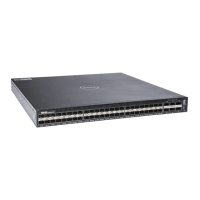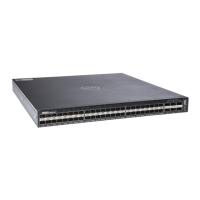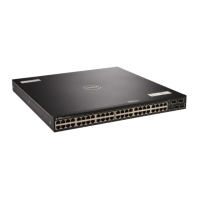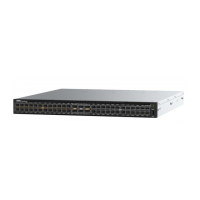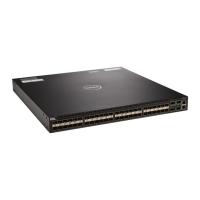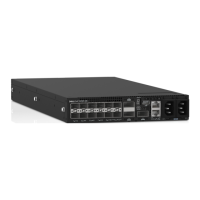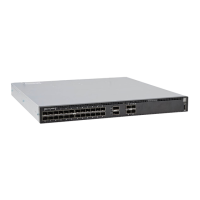• Destination port
• TCP Flags
After you apply a redirect-list to an interface, all trac passing through it is subjected to the rules dened in the redirect-list.
Trac is forwarded based on the following:
• Next-hop addresses are veried. If the specied next hop is reachable, trac is forwarded to the specied next-hop.
• If the specied next-hops are not reachable, the normal routing table is used to forward the trac.
• Dell Networking OS supports multiple next-hop entries in the redirect lists.
• Redirect-lists are applied at Ingress.
PBR with Redirect-to-Tunnel Option:
You can provide a tunnel ID for a redirect rule. In this case, the resolved next hop is the tunnel interface IP. The qualiers of the rule pertain
to the inner IP details. You must provide a tunnel ID for the next hop to be a tunnel interface. If you do not provide the tunnel destination IP
as the next hop, the next hop is treated as an IPv4 next hop and not a tunnel next hop.
PBR with Multiple Tracking Option:
PBR with the multiple tracking option enabled extends and introduces the capabilities of object tracking to verify the next hop IP address
before forwarding the trac to the next hop. The multiple tracking options feature is most suitable for routers which have multiple devices
as the next hop (primarily indirect next-hops and/or Tunnel Interfaces). These options allow you to backup Indirect next-hop with another.
Choose the specic Indirect next-hop and/or Tunnel interface which is available by sending ICMP pings to verify the reach ability and/or
check the Tunnel interface UP or DOWN status, and then route trac out to that next-hop and/or Tunnel Interface
Implementing PBR
• Non-contiguous bitmasks for PBR
• Hot-Lock PBR
Non-Contiguous Bitmasks for PBR
Non-contiguous bitmasks for PBR allows more granular and exible control over routing policies. You can include or exclude network
addresses that are in the middle of a subnet can be included or excluded. Enter specic bitmasks using the dotted decimal format.
Dell#show ip redirect-list
IP redirect-list rcl0:
Defined as:
seq 5 permit ip 200.200.200.200 200.200.200.200 199.199.199.199 199.199.199.199
seq 10 redirect 1.1.1.2 tcp 234.224.234.234 255.234.234.234
222.222.222.222/24
seq 40 ack, Next-hop reachable(via Te 8/1)
Applied interfaces:
Te 8/2
Hot-Lock PBR
Ingress and egress Hot lock PBR allows you to add or delete new rules into an existing policy (already written into content address memory
[CAM]) without disruption to trac ow. Existing entries in content addressable memory (CAM) are adjusted to accommodate the new
entries. Hot Lock PBR is enabled by default.
Conguration Task List for Policy-based Routing
This section explains how to congure PBR on the system.
• Create a Redirect List
• Create a Rule for a Redirect-list
• Create a Track-ID list
672
Policy-based Routing (PBR)

